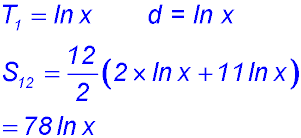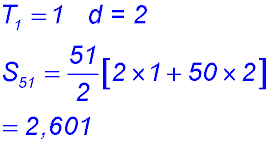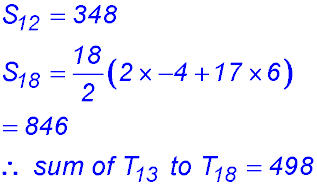Where the techniques of Maths
are explained in simple terms.
Sequences & Series - Arithmetic - Summation questions.
Test Yourself 1 - Solutions.
- Algebra & Number
- Calculus
- Financial Maths
- Functions & Quadratics
- Geometry
- Measurement
- Networks & Graphs
- Probability & Statistics
- Trigonometry
- Maths & beyond
- Index
| Direct sum of n terms (last term known). |
1. T1 = 4 and T12 = 40
|
2. loge2 + loge4 + loge8 + ... + loge 512
= loge2 + 2loge2 + 3loge2 + ... + 9loge2 So T1 = loge 2, d = loge 2 and n = 9. Sum = (9/2)[loge 2 + 9loge 2] = 45 loge 2
|
| 3.
The series is ln(x) + ln(x2) + ln(x3) + .. ln(x) + 2ln(x) + 3ln(x) + .. Sum of 12 terms is
|
4. 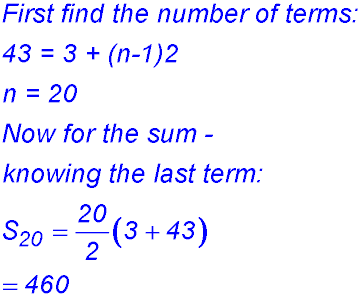 |
|
| Direct sum of n terms (last term unknown). |
5. The sum of the first 51 positive odd integers in the series is 1 + 3 + 5 + ...
|
6. Ellen deposits $20, $22, $24, ...
So T1 = 20 and d = 2 Savings = (18/2)(2×20 + 17×2) = $666. (Happy holiday Ellen!!). |
| 7. T1 = 15 and d = 5 and n = 16
∴ 5 series @ 8×25 min episodes = For the student, = 840 minutes. 4 series takes 4×8×25 = 800 minutes So not finished but 40 minutes into Series 5 - 15 minutes into episode 2. (ii) To finish: 1000 = 8(2×15 + 15d) d = 6.33 = 6 minutes 20 seconds is the
|
8. The first walk is 3 metres and then back, the second is 4 m and then back the third is 5 m etc. Hence just considering one direction, we have an arithmetic series with T1 = 3 and d = 1 and n = 24. ∴ S24 = (24/2)(3 + 24×1). = 324 m. We then double that distance to get the Supervisor back out the front. So total distance is 628 m. |
|
| 9. For the series starting 6 + 10 + 14 + ...
|
10. 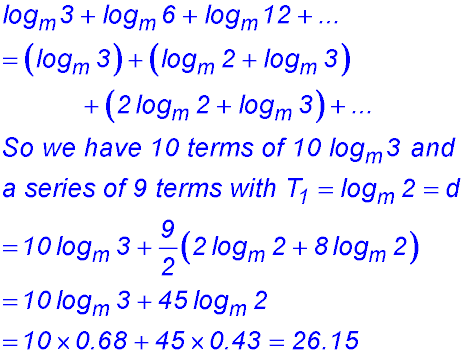 |
|
| Sum of multiples | 11.(i) 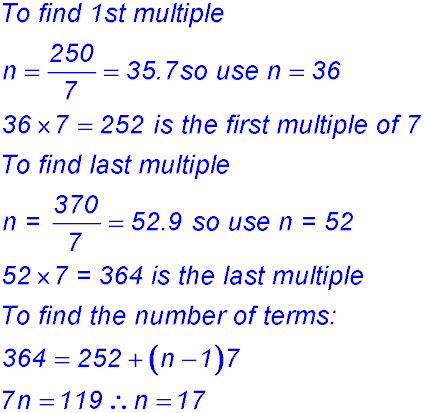
(ii) |
12. 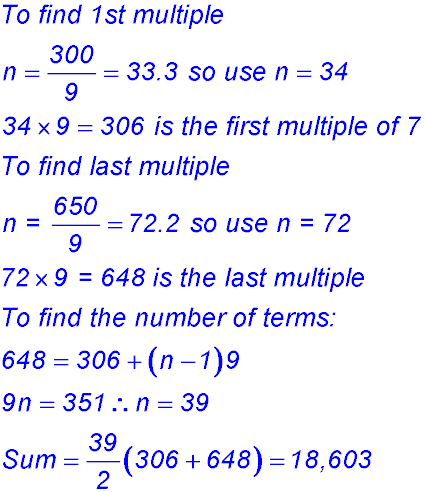 |
| Using the sum to find terms or difference. | 13. 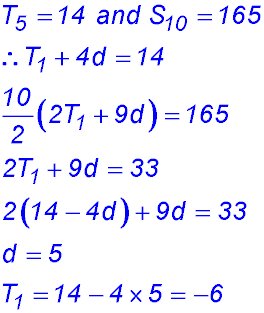 |
14. 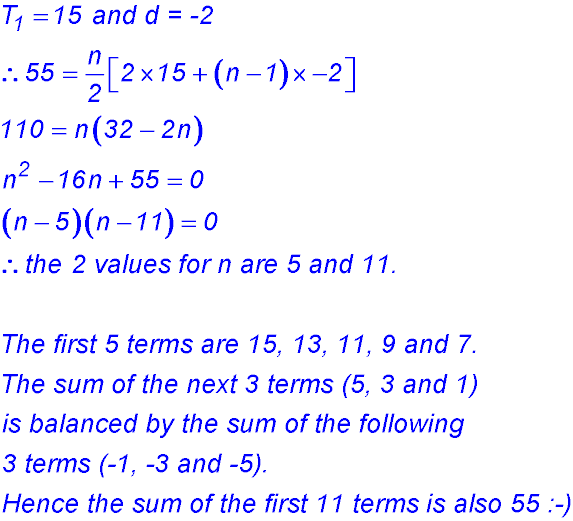 |
15. 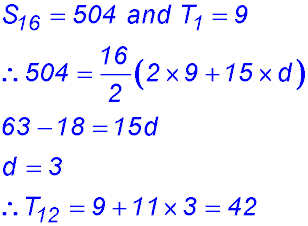 |
16. (i) 
(ii) |
|
17. 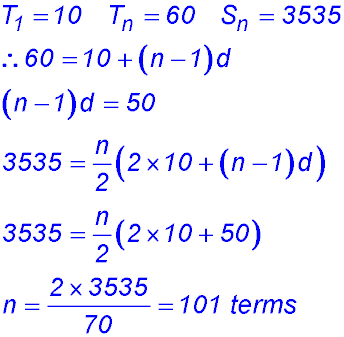 |
18. Similar question to Q 17 but an alternative (and better solution). Always good to have more than one approach to solving a problem.
|
|
| Using the sum to find the number of terms. | 19. Sn = 2n2 gives the first three sums as:
2, 8 and 18. But S1 = T1 = 2. S2 = 8 = T1 + T2 = 2 + T2 so T2 = 6. S3 = 18 = S2 + T3 = 8 + T3 so T3 = 10. The sequence 2, 6, 10 has difference = 4. ∴ T10 = 2 + (10 - 1)4 = 38. |
20. 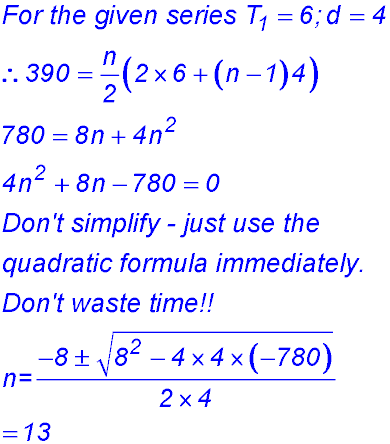 |
